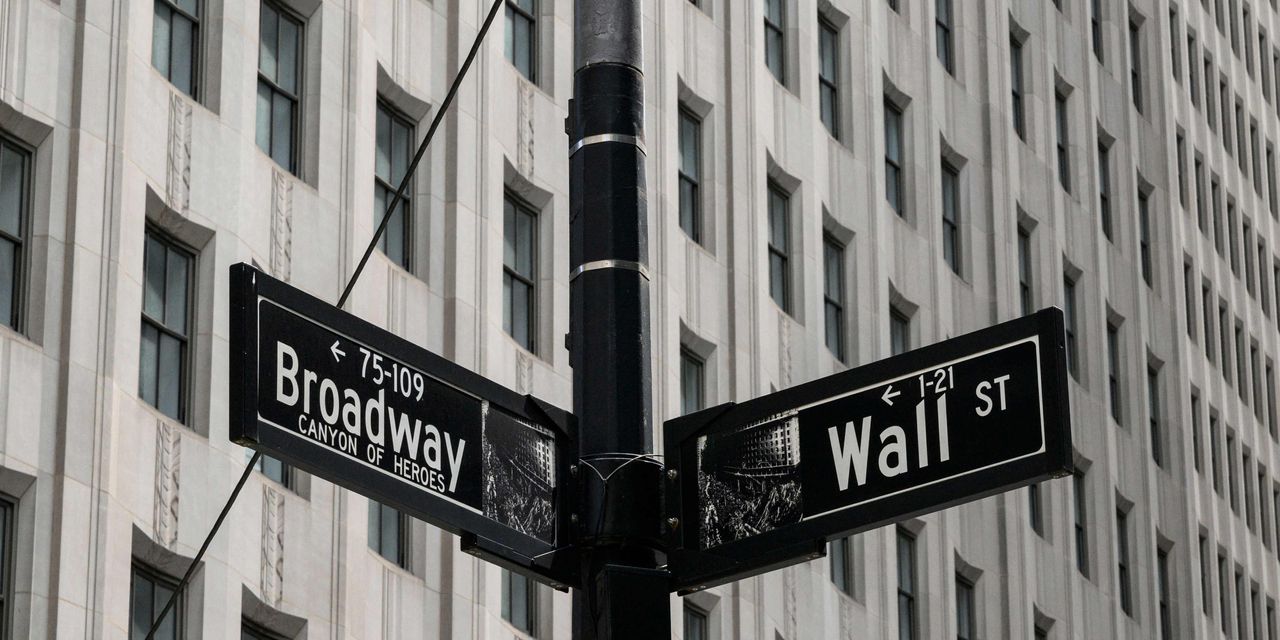U.S. stocks ended mostly lower on Thursday, despite hitting a three-month high early in the session after another batch of July inflation data suggested that surging price gains may be easing.
The Nasdaq Composite shed 0.6%, a day after it officially exited a bear market.
How stocks performed
-
S&P 500
SPX
declined 2.97 points, or 0.1%, to close at 4,207.27. -
Dow Jones Industrial Average
DJIA
rose 27.16 points, or 0.1%, to finish at 33,336.67. -
Nasdaq Composite
COMP
lost 74.89 points, or 0.6%, to end at 12,779.91.
On Wednesday, the Dow Jones Industrial Average rose 535 points, or 1.6%, the S&P 500 increased 2.1%, and the Nasdaq Composite gained 2.9%.
What drove markets
Stocks slumped into the closing bell, despite an early morning surge to their highest levels since early May, after the July producer-price index fell 0.5%, compared with expectations for a 0.2% rise.
See: U.S. producer price inflation moderates in July
Thursday’s optimistic inflation report followed a similarly cooler-than-expected reading on U.S. consumer-price growth released a day earlier. That data also helped send stocks soaring, with the Nasdaq exiting bear-market territory and the Dow exiting correction territory.
Hopes that inflation has peaked helped encourage investors to pile back into equities based on the view that slowing inflation could allow the Federal Reserve to hike interest rates less aggressively.
“While one number certainly doesn’t constitute a trend, the decline in wholesale prices could indicate that supply-chain bottlenecks are improving,” said Charlie Ripley, senior investment strategist at Allianz Investment Management. “Overall, the data, combined with CPI data earlier this week, is a welcome sign that we could be getting close to or have passed peak inflation. However, we would caution that while the trend is improving, we have a long way to go to get back towards 2% inflation.”
However, some market analysts are urging caution as rising housing costs could keep core inflation elevated, even as a drop in oil prices and other commodities has helped to reduce inflation expectations.
“Our view is that this is a rally that really deserves a lot of scrutiny because when we think about what has happened since the mid-June low, the market outlook hasn’t really changed,” said Jake Jolly, senior investment strategist at BNY Mellon Investment Management.
“Historically, the Fed delivers more hikes than the market anticipates. And this is clearly a hiking cycle that is far from over,” Jolly said.
The second quarter earnings season also helped underpin the market. Walt Disney Co.
DIS
shares jumped 4.7% Thursday, after the media and entertainment giant posted stronger-than-expected subscriber numbers for the last quarter, along with earnings and revenue that beat expectations.
With companies representing 91% of S&P 500 market capitalization having reported, sales growth has been 15.1% and earnings growth 7.9% – surprising by plus 3.5% and plus 3.6%, according to Evercore ISI.
However, the latest surge in stocks may have left the market overextended and vulnerable to a pullback. The CBOE Vix index
VIX,
an options-based gauge of expected S&P 500 volatility, briefly dipped below its long-run average of 20, suggesting traders may be getting a tad complacent.
In other economic data news, initial jobless benefit claims rose 14,000 to 262,000 in the week ended Aug. 6, as the weekly data continued to show rising numbers of Americans applying for jobless benefits — even as the unemployment rate inched lower last month to 3.5%.
See: U.S. jobless claims move higher, a ‘cool breeze’ over hot labor market
Companies in focus
-
Shares of GSK PLC
GSK,
Haleon PLC
UK:HLN
and Sanofi
FR:SAN
tumbled amid controversy surrounding serious side effects caused by the heartburn drug Zantac. Shares of Pfizer Inc.
PFE
fell more than 3%. -
Six Flags Entertainment Corp.
SIX
shares fell 18.2% after the theme park operator reported the second-worst performance in its 12-year public history, after a big miss in attendance led to a surprise drop in second-quarter revenue -
Canada Goose Holdings Inc.
GOOS
rose 1.8% after the company reported higher than expected revenue, which offset a larger-than-expected loss. -
Shares of Utz Inc.
UTZ
declined 3% after the salty snacks maker beat Wall Street’s adjusted net income and revenue targets and raised it fiscal 2022 organic net sales outlook by 2%. -
Warby Parker
WRBY
shares gained 19.2% after reporting a narrow-than-expected loss for the second quarter.
How are other assets performed
-
Oil rallied, with West Texas Intermediate crude
CL00CLU22
for September delivery up $2.41, or 2.6%, to finish at $94.34 per barrel. -
The yield on the 10-year Treasury
BX:TMUBMUSD10Y
climbed to 2.886% from 2.786%. Yields and debt prices move opposite each other. -
The ICE Dollar index
DXY
fell 0.1% to 105.11, with gold
GC00
ended marginally lower. Gold futures expiring in December
GCZ22
dropped $6.50, or 0.4%, to settle at $1,807.20 per ounce. -
Bitcoin
BTCUSD
advanced 2.4% to $24,210. -
Asia markets mostly got a lift from Wall Street’s overnight surge with Hong Kong’s Hang Sang
HK:HSI
finishing 2.4% higher, though Japan missed out because of the Mountain Day holiday. Shanghai Composite
CN:SHCOMP
rose 1.6%. -
In Europe, the STOXX 600
XX:SXXP
rose 0.1%, while the FTSE 100
UK:UKX
ended 0.6% lower.
— Jamie Chisholm contributed to this article.
